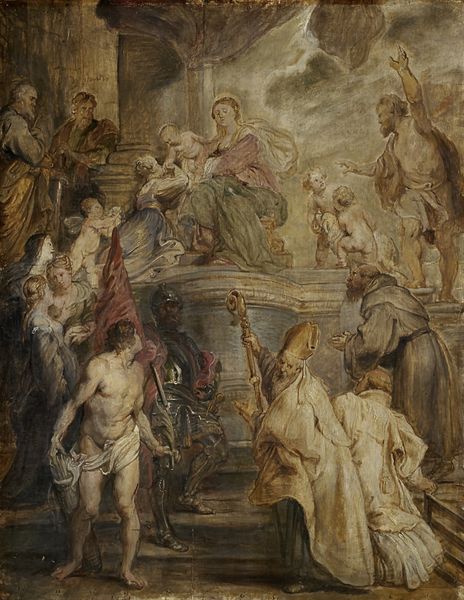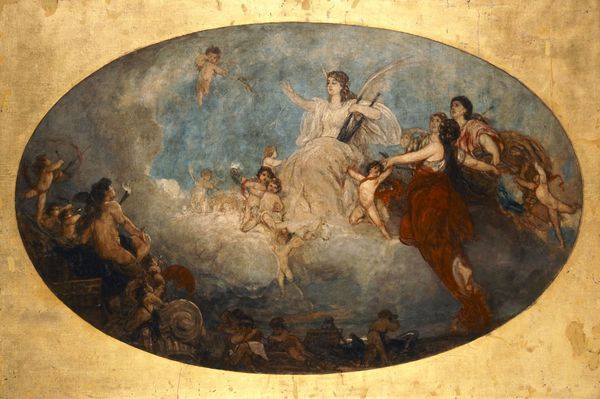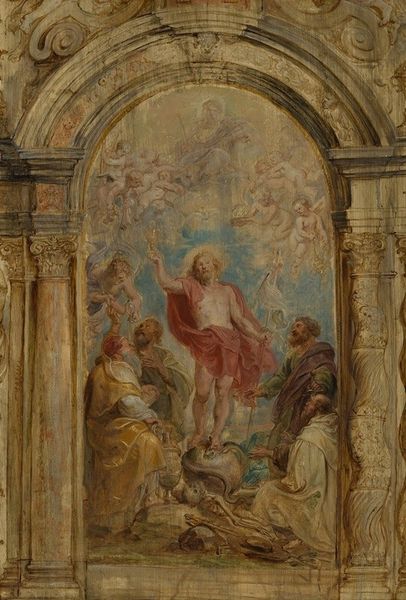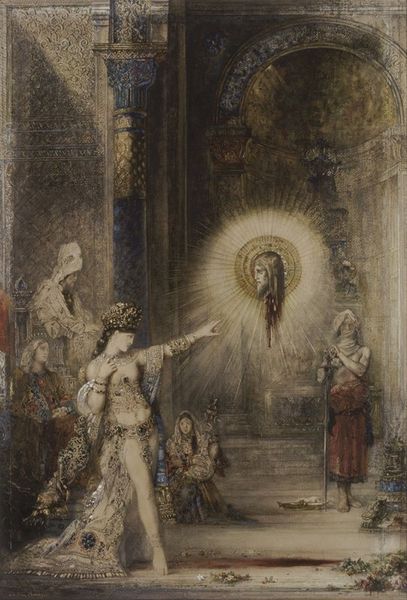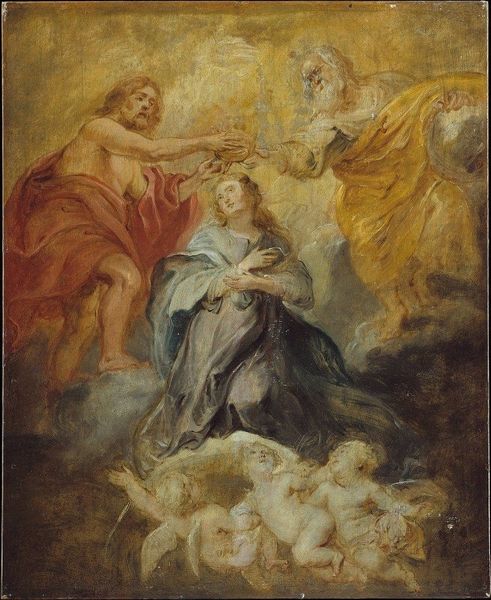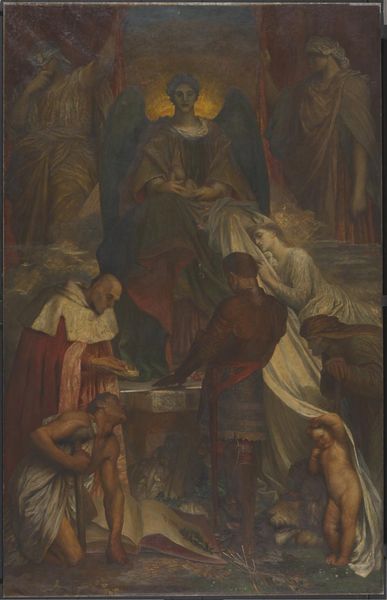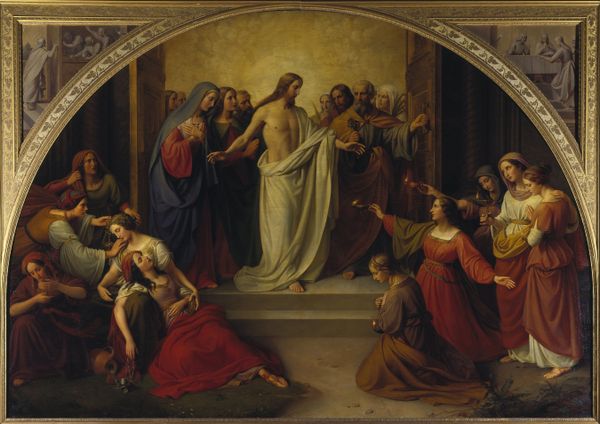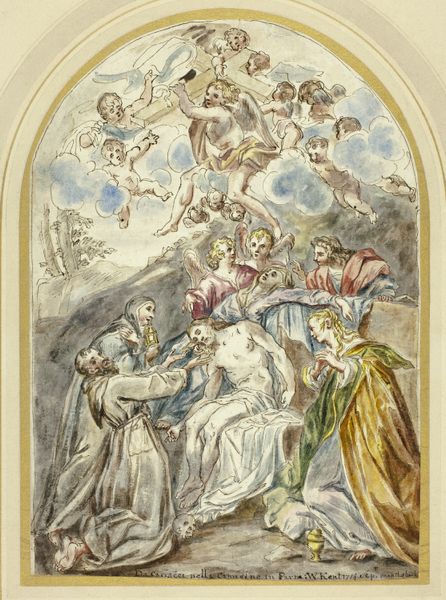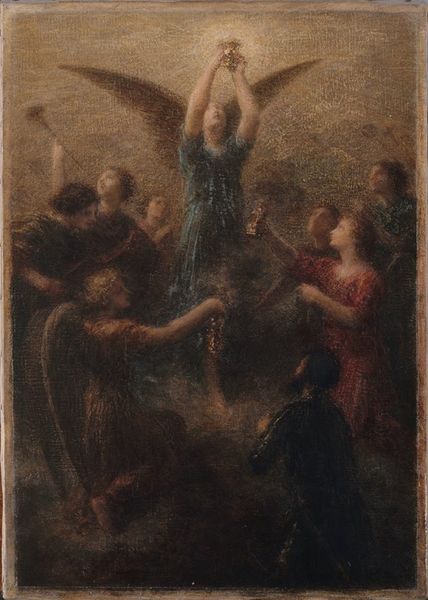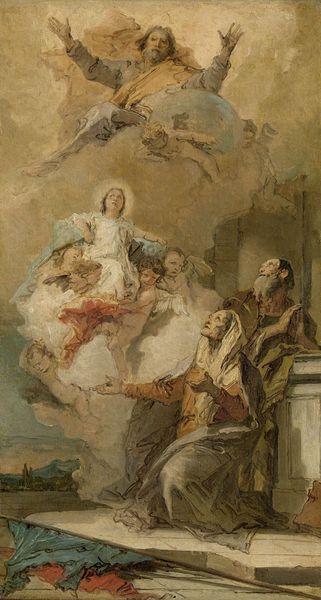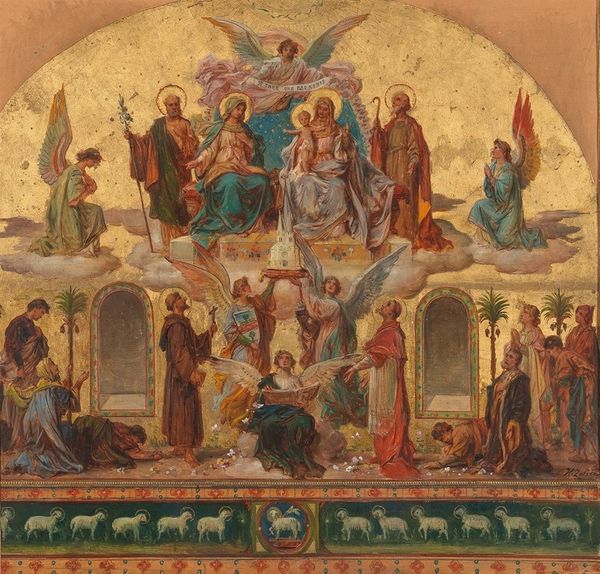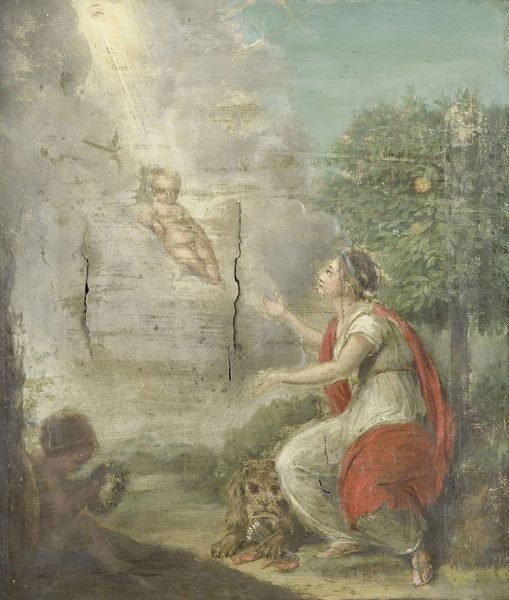
painting, gouache, watercolor
#
gouache
#
water colours
#
painting
#
gouache
#
figuration
#
watercolor
#
romanticism
#
painterly
#
history-painting
#
watercolor
Copyright: Public Domain: Artvee
Editor: We're looking at Ary Scheffer's "Projet pour un triptyque," dating from around the 19th century. It looks like it’s painted in gouache and watercolor. It’s strikingly devotional. What formal elements stand out to you? Curator: The composition immediately directs the eye vertically. Observe how the central panel employs a lighter tonality, pulling us upwards towards the apex of the architectural frame, suggestive of ascension. Editor: Yes, the luminosity in the central panel is quite different from the flanking sides. The brushwork seems looser there, too. Is that contrast important? Curator: Indeed. Consider how Scheffer orchestrates a subtle, painterly rendering in the lateral panels, employing denser, earthier pigments. This grounding visual weight serves to heighten the ethereal quality of the central figure. Note too how the figures in the side panels gaze towards her, further reinforcing the directional flow. Editor: So the asymmetry in both color and composition emphasizes the central figure’s significance through formal means? Curator: Precisely. Scheffer isn't merely depicting a religious scene; he is constructing a visual argument, prioritizing spiritual transcendence via compositional arrangement and tonal differentiation. The cool blues at the apex offer an additional sense of detachment, almost of the infinite. Editor: That’s fascinating. I hadn't considered how deliberately the visual weight guides the viewer's experience. It really reframes my understanding of the piece. Curator: Understanding the interplay between form and content is crucial. By deconstructing these visual relationships, we gain a deeper appreciation for the artist’s intent.
Comments
No comments
Be the first to comment and join the conversation on the ultimate creative platform.
